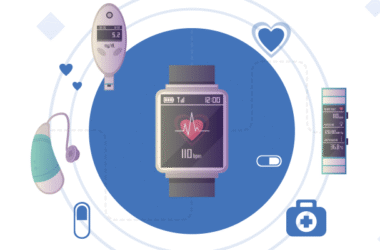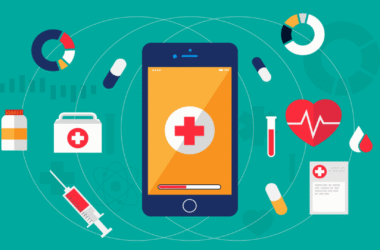Digital health is expanding fast. There is an increasing number of users and consumers of health applications, online physicians, and chatbots. Nevertheless, despite the usefulness of these tools, lots of patients may feel unsafe to share their health data. Others are afraid of privacy. Other people do not know how to trust such platforms. It is because of this that trust building is one of the significant elements of making digital health work.
Why Trust is a Major Priority in Digital Health
People will not trust a health app or a platform which they will not use. It is trust that makes patients provide their data, obey instructions in care, and come back when they require assistance once more. A 2023 survey by Accenture showed that merely 33 percent of survey respondents indicated that they fully trust health tech companies to manage their data responsibly. This indicates that critical efforts should be put in place to ensure digital care is safe and reliable.
Be Honest About Data Use
This is one of the initiatives that have to take place in order to gain trust by divulging how patient information is gathered and utilized. The patients must be informed about the fate of their health data. When a digital tool related to health stores personal data, it ought to indicate how the data will be secured and to whom it will be disclosed. Patients are also supposed to have a right to refuse to disclose some details.
The best example is the ability of Apple Health to allow subscribers to decide what to share. Such a decision puts the users in place. According to a 2022 study conducted by Pew Research, 79 percent of the population is worried about the way in which companies use the data they gather. It is to say that data use transparency is not a matter of choice, it is a must.
Use Strong Security That Patients Can Understand
Many people do not understand technical terms like “end-to-end encryption” or “two-factor authentication.” But they still want to know their data is safe.
Also, show users that security is active. If a user logs in from a new device, send them a notice. If something changes in their settings, let them know. This kind of small feedback builds trust over time.
Make It Easy to Use
A confusing app can make patients lose trust fast. If they click a button and nothing happens, they may think the app is broken. If they cannot find test results or messages from doctors, they might stop using it. So it is important to keep the design simple and keep instructions clear.
In 2024, the National Coordinator for Health IT found that 52 percent of patients who tried digital health tools stopped using them because they were too hard to use. That is a big number. So, developers need to test apps with real patients and fix problems before launch.
Give Patients Quick Access to Human Help
Even with the best app, people will sometimes get stuck or have questions. When that happens, it helps to offer support from a real person. This does not always mean phone calls — live chat or even quick email replies can work too. The important thing is that help is easy to reach and fast.
People trust humans more than machines. So having a real support team shows that a company cares. It also helps solve problems before they become reasons to quit the service.
Let Patients Control Their Experience

Giving patients control builds respect and trust. Let them pick how often they get messages or choose what kind of reminders they want. Let them turn off features they do not use. Let them delete their account if they want to leave. These small options make people feel like they are in charge.
A 2021 survey by Deloitte showed that 62 percent of people say control over personal data is a top reason they trust a digital service. This shows that even basic settings matter a lot.
It helps when a digital health tool can show how it helped others. If an app helped reduce blood sugar levels or improved mental health for most users, it is okay to share those numbers. But always be honest. Do not make big claims unless you can prove them.
For example, if 80 percent of users reported fewer headaches after using a tool for 3 months, that is helpful to know. But say how the study was done and how many people took part. This gives users useful information without sounding fake.
Keep Updating and Improving
Technology keeps changing. So digital health platforms must keep improving too. But with each update, tell users what changed and why. If new security tools were added or a problem was fixed, explain it clearly. This shows that the team is always working to make the tool better and safer.
It also helps to ask users what they think. Surveys, quick ratings, or feedback forms help find what needs to change. If users see their feedback turned into real updates, they will trust the app more.
Respect Cultural and Age Differences
Not everyone sees health in the same way. Some people are more private. Some older users may not feel safe with apps at all. So, digital health platforms should offer help in many languages and be made for people of different ages and skill levels.
A good example is offering voice help for those who cannot read well or use small screens. Or offering larger text and simple icons for seniors. In 2023, the WHO said that digital health tools should be made for people with limited tech skills, too. That includes about 37 percent of users in low-income areas.
End Notes
Building trust in digital health is not a one-time thing. It takes effort every day. Patients need to feel that their health, data, and time are respected. The best way to build this trust is by being honest, offering help, keeping data safe, and always trying to improve.
And when trust is strong, patients are more likely to stay connected, share data, and use these tools to manage their health better.









